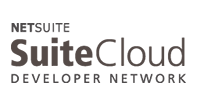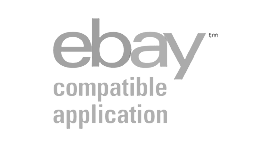Picking an eCommerce platform for your online business isn’t easy. With an overwhelming number of platforms to choose from, merchants must compare architecture, functionality, price, flexibility and more. Some merchants might have development and coding skills they can leverage, while others want an out-of-the-box platform with minimal set-up.
While there are many ways to compare platforms, this article focuses on two different software architectures – open source versus Software as a Service (SaaS). These two popular platform types put eCommerce software in two separate camps and dictate how you interact and finance your platform.
Let’s look at how these platforms differentiate from each other and which one might be better fit for your business.
Comparing SaaS vs Open Source eCommerce Platforms
When evaluating platforms, you’ll often come across the terms open source or SaaS and it’s important to know their differences. How your eCommerce software is built determines functionality, payment terms, and more.
What is a SaaS eCommerce Platform?
Software as a Service is a software licensing and delivery model in which software is licensed on a subscription basis. SaaS software can also be referred to as web-based or hosted software since it isn’t bought or installed on individual computers, instead it’s hosted in the cloud by a third-party.
In other words, SaaS eCommerce platforms are hosted and maintained by its provider then licensed out to merchants to use. Users access these applications via web browsers and pay a monthly subscription rate based on level of service and number of users.
The main advantage of SaaS eCommerce platforms is that the software isn’t installed on-premise or maintained by the user themselves. Instead your eCommerce provider builds, hosts and maintains the software on their own servers. However, this means that users are limited in their ability to edit or change the software’s source code.
Popular examples of SaaS eCommerce platforms include:
Many of these platforms, especially Shopify, have seen great adoption over the past several years as merchants opt to not host and maintain their own eCommerce software.
What is an Open Source eCommerce Platform?
On the other side aisle, there are open source eCommerce platforms. Open source software allows its users to view, change, and distribute its source code for your own purpose. In this way, open source software is developed in a public and collaborative way. You can find and download open source software in communities like GitHub.
The main advantage of an open source eCommerce platform is that merchants have full access to the software’s source code. If there’s functionality that you’re missing, you can build it yourself. There’s also large development communities built around the platform that you can leverage. Open source software is known for its customizability and flexibility.
Popular examples of open source eCommerce software include:
- Magento
- WooCommerce – eCommerce plugin for WordPress
- X-Cart
- Prestashop
- OpenCart
Despite hosted platforms’ rising popularity, many developers and agencies are still loyal to open source platforms for its customization and control.
Comparing SaaS vs Open Source Platforms
SaaS and open source platforms are two fundamentally different software types. Each platform’s architecture drives your experience with the software and impacts how you run your business.
Here are the main areas to compare:
- Go-to-Market Time
- Ongoing maintenance
- Security / PCI Compliance
- Customization / Features
- Integration / Flexibility
- Total Cost of Ownership
Go-to-Market Time
Both open source and SaaS platforms are relatively easy to install. An open source platform’s framework is free to install and SaaS platforms like Shopify usually offer a free trial to get started.
However, don’t be fooled by open source’s free price tag to download. These platforms will have considerable more work and coding knowledge needed to get up and running. You’ll have to attain hosting, security, and build your theme. Think of open source as you’re starting an eCommerce platform from scratch. While you get more control over the look and feel, you’ll be required to make more decisions over time.
SaaS platforms, on the other hand, are built for out-of-the-box functionality. They typically have user-friendly UIs and pre-built themes to build you store’s look (with little to minimal coding knowledge). Since they take care of hosting and security, you don’t have to worry about setting that up. Realistically, you can have a minimalistic store ready in just a few days.
Overall, if you’re looking to get started quickly, a SaaS eCommerce platform is going to be your best bet.
Ongoing Maintenance and Support
SaaS eCommerce platforms require little effort on the merchant’s part for ongoing maintenance. Since you’re licensing the software, the SaaS provider hosts, monitors, and upgrades their software on an ongoing basis. You don’t have the responsibility for performance, server issues, and more. This also means that you have a provider to call when something goes wrong. It’s their responsibility to fix system crashes or any software bugs.
Open source platforms, on the other hand, put maintenance and support on the merchant or their developer agency. You’re responsible for all infrastructure and administration of the platform. You must set up hosting and stay on top of software upgrades and updates. If something goes wrong in your environment, then you must find and fix the issue.
Some merchants might want this complete control over performance, site speed, and how you build your infrastructure.
Security / PCI Compliance
A topic of upmost importance is your webstore’s security and PCI compliance. With hackers constantly looking for vulnerable sites, you must safeguard your users’ data, especially their payment info.
SaaS software providers will take care of security and PCI compliance for you. Open source platforms, however, leave that to their users. You’ll have to ensure you meet PCI compliance standards and stay up to date with any patches or bug fixes for your security firewall.
Customization / Features
Both SaaS and open source platforms will meet your basic eCommerce needs. You’ll be able to customize your shop’s theme, product pages, check-out experience, email marketing, etc.
Instead, it’s important to think about your unique needs and the ultimate customer experience you want to create. Those more unique needs might dictate which platform you decide on.
As mentioned, SaaS eCommerce platforms are easy and quick to set up because they leverage considerable out-of-the-box functionality. Then, they offer extensive app marketplaces to extend functionality for cart abandonment, email marketing, loyalty programs, and more.
Where SaaS platforms can fall short for merchants is the ability to customize features, themes and performance. You’ll have restricted access to the source code, which limits your ability to edit and change it. If there’s not an app or functionality built yet that you need, you might be out of luck.
Open source platforms, however, are built to handle customization and encourage their developer communities to adapt and evolve the platform. This means that the sky is the limit here on functionality. Many Enterprise businesses opt to use open source platforms to build out that unique custom experience, whether done in-house or by an agency.
Either way, your developers needs to know what they’re doing. You don’t want to build a “Frankenstein” site that becomes bulky and cumbersome to use over time. Just because you can build it, doesn’t mean you always should.
Integration / Flexibility
Many eCommerce sellers run multiple systems to operate their business. Alongside your eCommerce platform, you might also have an ERP, POS, inventory management system, PIM, or 3PL provider. After all, eCommerce platforms aren’t robust enough to handle complex order processing, supply chain management, product information management, and cross-channel experiences.
Whether you need it now or later, you should consider how well each platform integrates into other software. Both SaaS and open source platforms should have available APIs to connect with other systems, though individual platform might vary in their APIs capabilities.
The only thing to note is that those open source “Frankenstein” sites can be hard to integrate because of their customization. Integration projects for sites like these can be lengthier and unpredictable. It might require more prep work from the merchant or integration partner to transfer data between systems.
Total Cost of Ownership
Many of the aspects considered above affect the total cost of ownership of each platform type. Here’s how costs break down for SaaS and open source platforms.
Open Source Platform Total Cost of Ownership
- Free eCommerce framework
- Licensing fees
- Hosting provider fees – will pay more if needed to increase bandwidth for increases in traffic volume
- Web developer or agency fees
- Additional costs to fix bugs or patches in software updates
- Security and PCI compliance costs
- Apps or extensions
- Integration into other systems
Open source platform’s additional fees and costs can add up to thousands of dollars over time.
SaaS eCommerce
- Monthly subscription rate – ranging from $0 to $5,000 / month
- Agency fees, if used
- Apps or extensions
- Any integrations into other systems
SaaS eCommerce platforms host and maintain thousands of sites. Because of the volume, they usually can offer merchants lower costs over time. Your monthly subscription rate is usually less than it would take for you to license, host, maintain and support your site yourself. However, you’ll be paying a monthly subscription rate for continued access to your eCommerce software.
SaaS vs Open Source: How to Choose the Right eCommerce Platform
When evaluating eCommerce platforms, merchants must choose between SaaS and open source offerings. Depending on your needs and budget, one platform type might be better suited for you than the other.
Check out these other articles to help compare eCommerce technology:






Join The Conversation